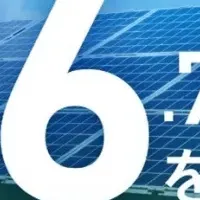
JA Solar Sets New Standards with Massive 1GW PV Module Delivery for Eco-Friendly Project
Introduction
In a landmark move for sustainable energy, JA Solar has begun delivering an impressive 1GW of its high-efficiency DeepBlue 4.0 Pro photovoltaic (PV) modules to the Suji Sandland PV project located in Inner Mongolia's Urad Front Banner. This project is pivotal as it constitutes a crucial phase in China's ambitious large-scale wind and solar power initiatives, aiming to meet both ecological restoration goals and global carbon neutrality targets.
The Significance of the Project
Suji Sandland presents significant ecological challenges, typical of desert regions that struggle with various environmental threats. The deployment of JA Solar's advanced DeepBlue 4.0 Pro modules is a transformative step aimed at converting these inhospitable areas into viable sources of clean energy. The move is not just a commitment to renewable energy but a strategy to support the area's overall green transition.
Exceptional Durability in Extreme Conditions
JA Solar's DeepBlue 4.0 Pro modules are designed with durability in mind, performing reliably under extreme conditions that prevail in deserts. These modules have previously shown excellent performance metrics in various desert projects, including the Kubuqi Desert and Ulan Buh Desert. They are specifically engineered to withstand factors such as high ultraviolet radiation, frequent sandstorms, and large temperature fluctuations—all of which could otherwise threaten the integrity and efficiency of PV projects in such environments.
Aiqing Yang, the Executive President of JA Solar, commented, "This project demonstrates how advanced PV technologies contribute to clean energy and ecological recovery in harsh desert environments. We are proud that our DeepBlue 4.0 Pro modules are helping turn vast stretches of sand into valuable green assets supporting environmental goals."
Project Goals and Expected Outcomes
The ambitious Suji Sandland project, which is expected to be completed by the end of 2025, will cover more than 42,000 acres. Once operational, it is projected to generate approximately 2.96 billion kilowatt-hours of electricity annually. Remarkably, this output will lead to significant reductions in carbon emissions, saving around 900,000 tons of standard coal and reducing CO2 emissions by an astounding 2.68 million tons each year.
Moreover, this project adopts an innovative "PV + ecological restoration" approach. This model integrates under-module planting to develop a micro-ecosystem, which will combat desertification and promote biodiversity alongside energy generation.
Conclusion
Through the integration of cutting-edge solar PV technologies and sustainable land use practices, JA Solar is not only spearheading a significant project in Inner Mongolia but also paving the way for large-scale renewable energy initiatives globally. This endeavor aligns closely with international efforts towards energy transformation and ecological preservation, marking a major step forward in the quest for a sustainable future. By turning unyielding desert landscapes into thriving green energy assets, JA Solar is setting a precedent that could inspire similar projects worldwide.
Future Prospects
As the global community increasingly acknowledges the need for sustainable energy solutions, JA Solar's visionary projects serve as critical blueprints. They demonstrate that it is indeed possible to merge ecological restoration with energy production, setting a new paradigm for how we approach energy development in sensitive environments. The evolution of the Suji Sandland PV project will undoubtedly be monitored closely as a benchmark for future endeavors in the renewable energy sector.
Topics Energy)










【About Using Articles】
You can freely use the title and article content by linking to the page where the article is posted.
※ Images cannot be used.
【About Links】
Links are free to use.